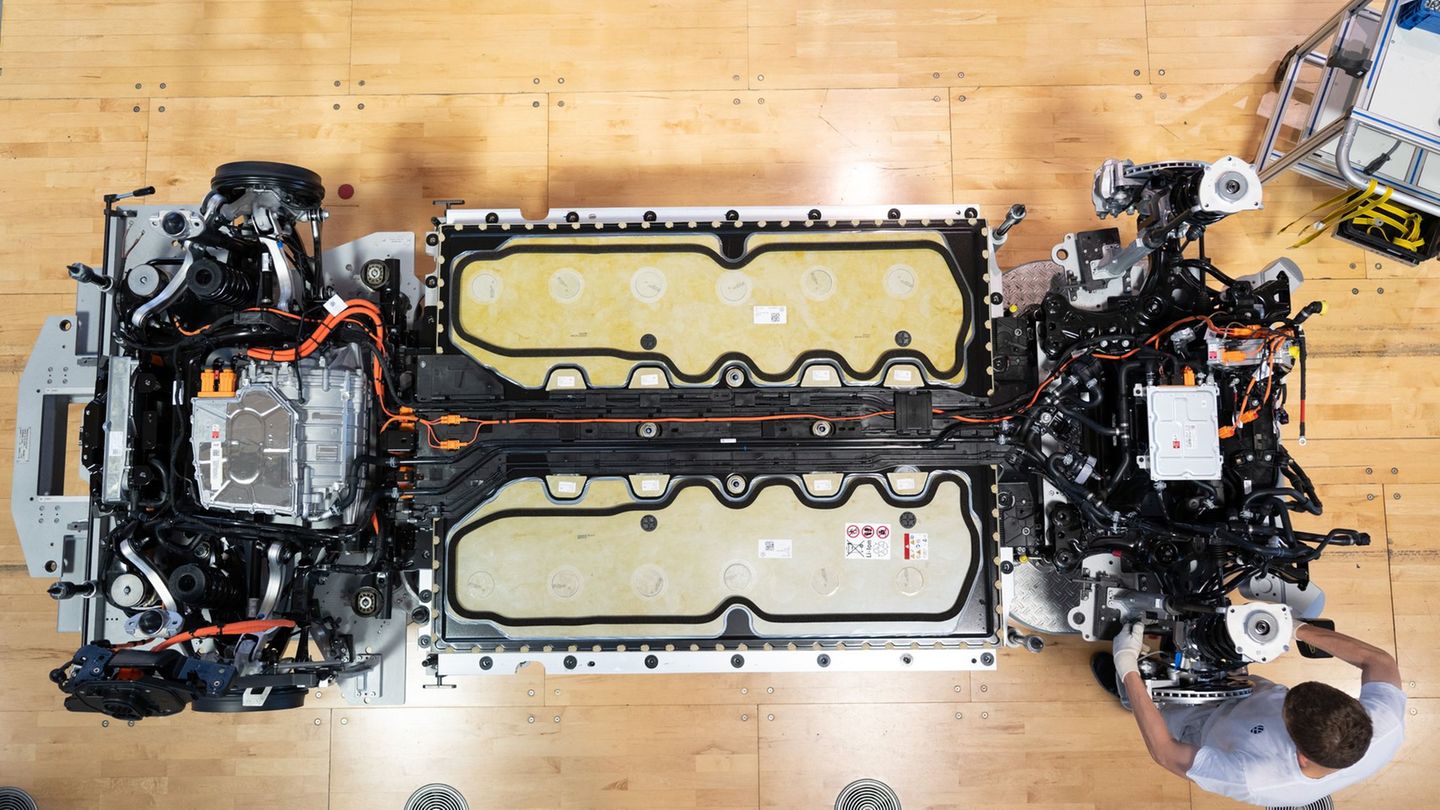Mobility and environmental protection
Fraunhofer Institute tumbled e-car myths
Copy the current link
Add to the memorial list
How environmentally friendly are Stromer, how long do the batteries last and do you pay as a user? There have been conflicting answers for a long time. A large overview study now comes to clear statements.
If you don’t want to drive an electric car, you will find many excuses on a quick internet search. Expensive and in truth bad for the climate, it is partly said there. And don’t they burn? But a current overview of the Fraunhofer Institute for System and Innovation Research (ISI) in Karlsruhe now shows that the vast majority of science comes to a different judgment- and it is quite clear in favor of the Stromer.
“In general, there is still relatively high skepticism in Germany against the electric car,” says study author Martin Wietschel, who heads the energy technologies and energy systems department at ISI. “From a scientific perspective, we cannot understand many reasons for this.” He and his co -authors have evaluated more than 70 studies and other scientific sources in order to summarize the state of affairs from a scientific perspective. It is the new edition of a similar overview from 2020. “A lot has happened since then, especially with the batteries,” says the expert. That strengthens the position of the electric car.
“When it comes to greenhouse gas emissions, the assessments are no longer as far apart as before,” says Wietschel. In a holistic view from production to disposal, the researchers attest to a mid-range current in Germany today with average mileage with average mileage emissions than a comparable burner. In the manufacture, the Stromer therefore come to greenhouse gas emissions, depending on the energy source, energy efficiency of production and battery sizes, which are 60 to 130 percent higher than in burners. When driving, CO2 emissions are significantly lower. If you assume the German electricity mix and a stopping the energy transition, you will get to the above advantage in the long run.
However, the researchers do not hide the fact that there are exceptions: “If a difficult, less efficient electric vehicle with a large battery capacity and low annual mileage, which generally only loads with the current German electricity mix, the greenhouse gas balance is hardly better compared to a corresponding conventional vehicle.” However, the question arises how often the example of a large car with a large battery and low mileage is in reality.
And with the progress of the energy transition and thus greener electricity, the advantage of the Stromer is greater. Likewise, if it is already being loaded primarily with renewable electricity-through controlled charging at the right time or with the almost 50 percent of the e-vehicle users who have their own photovoltaic system.
The economic balance sheet
“An electric car can already be cheaper than a burner if you look at the complete costs – not just the usually higher purchase price,” says Wietschel. “We start from new cars, with cheaper used cars this could be even clearer in favor of the electric car.”
Overall, however, it depends on various factors, including where and how to load. If you have a charging option at home or at the workplace, “then e-vehicles can be more economical than comparable combustion engines after three years of hold,” says the study. Overall, it speaks of mileage costs similar today with average performance in the middle class. “The currently even higher acquisition costs are compensated for by the lower running costs.” They refer not only to cheaper energy, but also to lower maintenance costs.
And it can also get even better here: On the one hand, the researchers go out from falling prices for the electric cars and better and cheaper batteries. On the other hand, bidirectional charging not only brings something for the environment, but also for the wallet. The possibility that the car will pick up energy and later return to your own house or even online can be a strong further thrust for economy, says Wietschel. “Ideally, you can save up to 1000 euros a year. And that would also be good for the environment because, for example, solar power can then be better used.”
The researchers consider that the batteries of the car could break faster faster. “And at the latest in a few years at the latest, we will probably reach the point anyway, in which the battery lasts significantly longer than the rest of the car,” says Wietschel. However, there are still few cars with which bidirectional shop is possible, but he limits. “What already works is controlled charging at the smart meter. This also improves environmental friendliness and economy. Because the electricity is usually the cheapest when it is even most environmentally friendly – and the price differences are sometimes enormous. Even if you only captivate the battery, are quickly saved.”
This topic also comes up again and again in connection with electric cars. However, the researchers’ judgment is clear: “Comparing the frequency of fires of electric cars with those of conventional cars cannot be assumed from a higher risk of fire,” they write. “There are even a number of current studies that arise from a significantly lower fire risk in pure battery vehicles.” However, the data situation here is still rather thin.
Here the electric cars cut off a little worse. In some areas they are behind combustion. One of them is fine dust. This may surprise this at first glance, you can connect older diesel in particular, but in the meantime the engine is no longer the engine with new cars, but the tire abrasion is the crucial size. And the higher weight of the Stromer is a disadvantage. However, there are developments in tire technology that could help here, the authors write.
“There are more environmentally friendly ways to move as an electric car,” summarizes Wietschel. “But an electric car is still clearly more environmentally friendly than a comparable burner.”
dpa
Source: Stern




